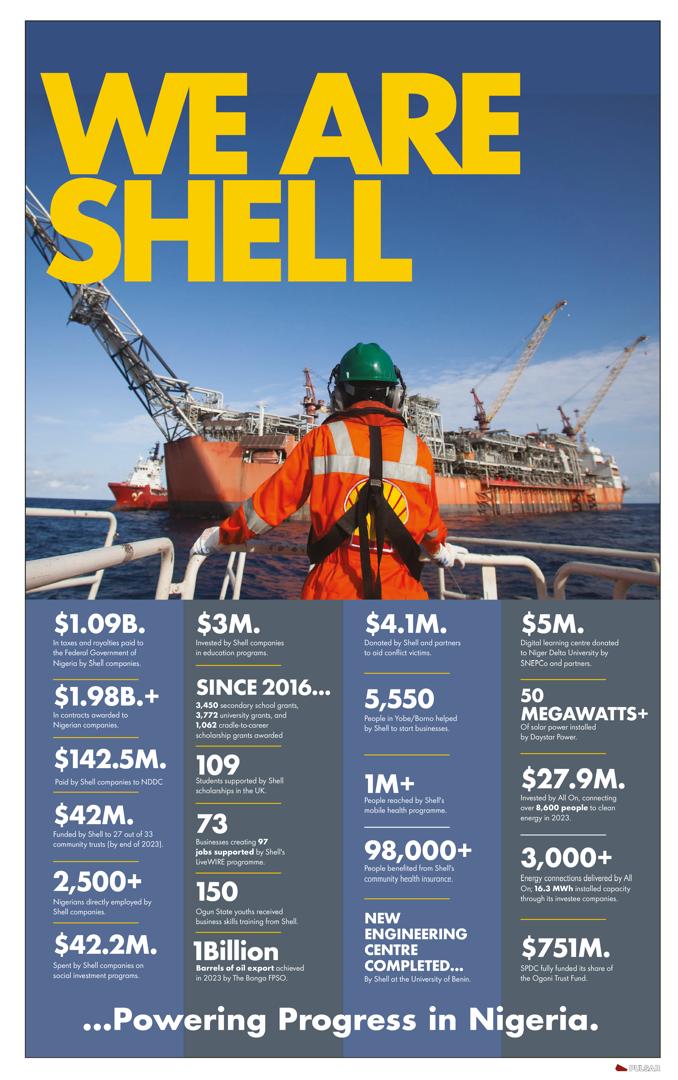EXCITING NEWS: TNG WhatsApp Channel is LIVE…
Subscribe for FREE to get LIVE NEWS UPDATE. Click here to subscribe!
May Day is for children what May Day is for workers – one is celebrated on May 27 as Children’s Day while May 1 is Workers’ Day or Labour Day. To mark the day, workers hold rallies across the globe to highlight the plight of workers as the real producers of goods and services and the challenges of government policies, safety at work and unbridled profit-taking by investors. In the era of proletariat and bourgeoisie, these two ideologies are well understood but in capitalist ecosystems, the worker and investor dichotomy is not well delineated. In the capitalist systems, everyone claims to be a worker, both the business owner or employer and the employee. The International Labour Organisation as a UN agency highlights the importance of human labour in the workspace.
It will be difficult to really separate the concept of the worker as one who performs a task for wages from the investor who also performs tasks to receive wages plus dividends from his investment. Both are engaged in some form of work.
Appropriate wages, salaries and other benefits for workers will continue to dominate debates and pitch employers against employees as long as this relationship is not strengthened on a symbiotic basis. Either the investor wants to take more profit or the employee deems his work not properly remunerated and pushes to get an enhanced paycheck. Whichever side anyone inclines, the labourer, including the investor, deserves his pay.
In the overall interest of the worker, additional benefits have been built into the welfare package offered by many firms, some according to legislation, others by virtue of labour conventions and agreements. Beyond the demands for appropriate weighting of labour input and wages, job security arising from automation and artificial intelligence are the real challenges of human labour today. Fortunately, despite the fear generated by new technological inventions, human hands and supervision are as important as the machines that purport to replace humans in the workplace.
Although research into the impact of AI on the labour market is ongoing, preliminary results indicate more jobs being unfurled with technology. However, as these discoveries are put to use, retooling, upskilling or reskilling are required from employees who desire to be in lane and up-to-date.
The OECD confirms that “the empirical evidence based on AI adopted in the last 10 years does not support the idea of an overall decline in employment and wages in occupations exposed to AI. Some studies suggest a positive impact of AI on wage growth.”
Workers’ welfare and insurance
There are lots of legislations aimed at the protection of workers’ rights and exploitation. In addition, we have pensions, group life and health insurance, workmen’s compensation and social security. Insurance of buildings under construction and other public liability insurances should be subjects of interest to organized labour. My previous articles on this tended to draw attention to the fact that the lack of awareness in the provision of these basic protections for workers has helped unscrupulous employers to divert benefits meant for the employee to other uses.
Firm-based incentives like profit sharing and staff shareholding opportunities have also been used effectively to motivate workers to perceive the work and their productivity as self-enhancing. Fortunately, workers know when output and sales are high and can push for more pay. And when it declines, what about a pay cut? These are frictions that may arise from the dynamics or the work environment.
Aside the organized labour, smaller pressure groups have negligible muscles to push for any adoption of mass insurance. It is in their interest because what is regarded as workers are diverse and multiform but having the labour unions as the most powerful mouthpiece and instrument for fair labour practices.
Group life insurance and pensions are mandatory for all employers of labour, from MSMEs to large corporations. Enforcement of compliance on the pension side is smoother, though companies’ group life insurance was farmed out of the Pensions Reforms Act. Organised labour in the country may seek the services of consultants to look at the provisions and advice and extension that can be mutually beneficial to both employer, employee and regulators. One such area to examine is what may accrue, in terms of financial benefit, to the worker in the event he leaves office from five years and above. This may require that the existing offering has a contribution from the employee and the group life takes the form of savings with death benefits. Both NAICOM and PENCOM have much input in this after the provision has been reworked.
Typically, HMOs provide health insurance for established companies. Since a healthy workforce is key to higher productivity, Labour unions should also ask questions about their health insurance and their coverage, benefits both to themselves and their families. What is adequate for the type of work and the exposure to work hazards? These are payments that are not monetized but which in any case accrue to the worker. Workplace unions and the enterprises’ HR units should educate their members about health insurance to give them a fair idea of the benefits so that in health emergencies their families are well taken care of within the values placed on their contribution to the company. The unions can trigger negotiations where they believe their members are not covered.
The social security Act now operating as the Employee Compensation Scheme under the Nigeria Social Insurance Trust Fund offers compensation to insured employees for occupational ailments, injuries or disability at work and the duration of employment. Working in tandem with buildings under construction insurance can be strengthened through the labour movement’s demands for total compliance by companies. The collective agreements ought to include this special provision, mostly for skilled labour in order to stop non-compliance in this respect.
AI knowledge acquisition
According to the OECD, “the occupations judged to be most exposed to AI include high-skilled occupations involving non-routine cognitive tasks, such as lab technicians, engineers and actuaries. Actuarial input is essential in every sector and all types of work. Nigeria does not have many qualified actuaries and thus, should draw from AI to do much-needed actuarial valuation of its financial and non-financial activities. However, it is not foreseen that jobs in these occupations will disappear with their high exposure to AI.
While the labour market must not be fixated on physical routines and building bottlenecks to AI’s expanding capabilities, the movement should seek a greater impact on the basis of “reorganisation of tasks within an occupation, with some workers ultimately complemented in their work by AI, rather than substituted by it”.
Essentially, workers may demand reskilling and upskilling from their employees to adapt to the emergent reorganisation of tasks and AI-related new tasks and prevent potential job loss as well as navigating transitions to new jobs. “The smoothness of the AI transition and the extent of the impact on workers will also depend on firm-level incentives to retain and retrain staff and on institutional factors, such as the general infrastructure for training and job-search available in the country, direct government funding, tax incentives and social benefit systems.”
In the paper, “The Impact of Artificial Intelligence on the Labour Market: What Do We Know So Far?” the Organisation for Economic Cooperation and Development identified AI gap areas where human labour require strengthening to include “creative and social intelligence, reasoning skills, and dealing with uncertainty”
The OECD’s Artificial Intelligence in Work, Innovation, Productivity and Skills (AI-WIPS) programme endeavours to build AI principles that are “innovative and trustworthy and respect human rights and democratic values”. The principles outline actionable areas for governments to build human capacity and prepare for labour market transformation including;
▪ “Empowering people to effectively use and interact with AI systems, including equipping them with the necessary skills;
▪ Ensuring a fair transition for workers as AI is deployed, including via social dialogue, training programmes, support for those affected by displacement, and access to new opportunities in the labour market; and
▪ Promoting the responsible use of AI at work, to enhance the safety of workers and the quality of jobs, to foster entrepreneurship and productivity, and to ensure that the benefits from AI are broadly and fairly shared.”
The Nigerian tech environment and AI
Although Nigeria appears to have started early to institutionalise the framework for a knowledge-based economy through the National Centre for AI and Robotics (NCAIR) and the Nigeria Data Protection Regulation (NDPR) much requires to be done to own these systems. In order words, we regulate what we do not indigenize. The best way to start is to harness the tech-savvy youth population and tap the Indian market for technology transfer.
Nigeria is said to be one of the most technologically advanced countries in Africa but it is estimated that over 90 per cent of software used in the country is imported. Ordinarily, these should be labour growth areas where higher employment is possible. The wholesale adoption of AI without demanding transfer will not bode well for the Nigerian economy and the labour market.
Organized labour also needs to address its demands for changing work environment and the wages thereof. A scalable remuneration is based not only on productivity performance scales but also on extreme work requirements. For instance, those who work night shifts must demand higher pay during the time they are deprived of their sleep. Day’s hourly or weekly salaries should not be the same as Night’s. Work supervision at night even when AI is deployed is tasking.
Finally, it is important that a study group comprising all stakeholders is set up to foretell and predict the impact of AI adoption, and adaptation on the Nigerian systems – the human interface and jobs that could spin off from these. The OECD papers would be a good reference for the study group.









